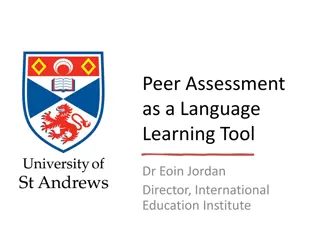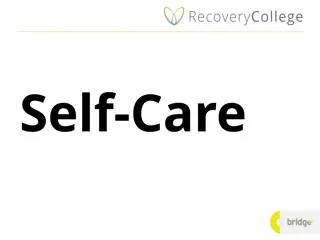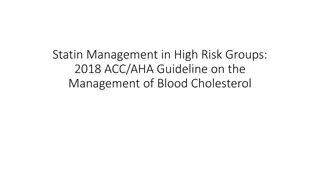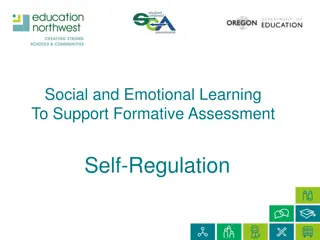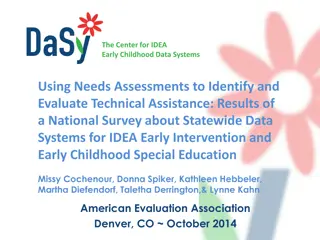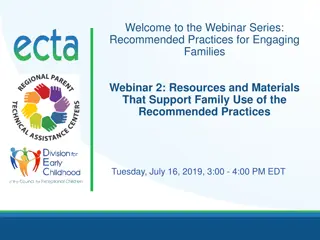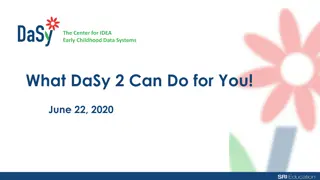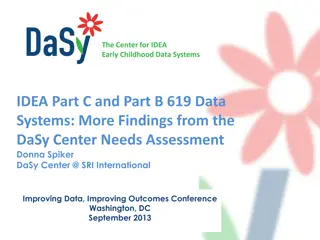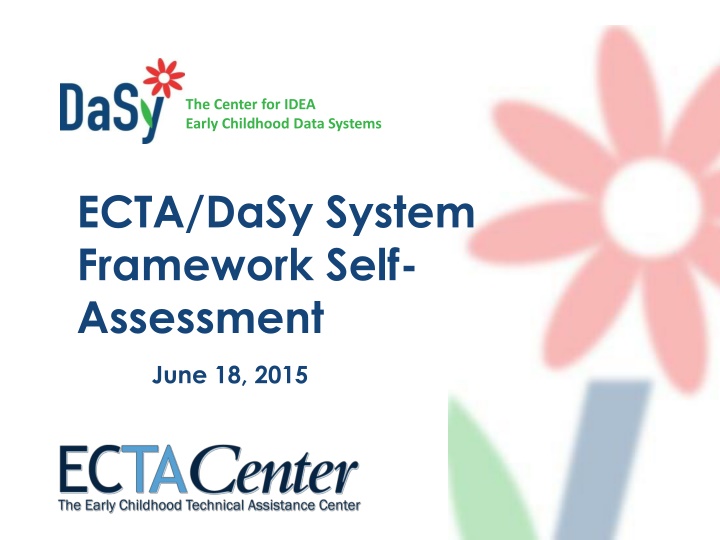
ECTA/DaSy System Framework Self-Assessment for Improvement Planning
Explore the ECTA/DaSy System Framework Self-Assessment to evaluate and improve state Part C and Section 619 programs for children with disabilities. Learn about its purpose, features, and components to enhance outcomes for families and children.
Download Presentation

Please find below an Image/Link to download the presentation.
The content on the website is provided AS IS for your information and personal use only. It may not be sold, licensed, or shared on other websites without obtaining consent from the author. If you encounter any issues during the download, it is possible that the publisher has removed the file from their server.
You are allowed to download the files provided on this website for personal or commercial use, subject to the condition that they are used lawfully. All files are the property of their respective owners.
The content on the website is provided AS IS for your information and personal use only. It may not be sold, licensed, or shared on other websites without obtaining consent from the author.
E N D
Presentation Transcript
The Center for IDEA Early Childhood Data Systems ECTA/DaSy System Framework Self- Assessment June 18, 2015
Outcomes for this Webinar Participants will Understand the potential uses of the Framework Self- Assessment Learn how to use the self-assessment to evaluate various components of their Part C or Section 619 state system Learn how to use the self-assessment as the basis for improvement planning 2
What we will cover today Overview of the self-assessment Guidance on use of the self-assessment Demonstration of the self assessment 3
Poll Questions 4
The ECTA/DaSy System Framework: What is it? Good outcomes for children with disabilities and their families Implementation of Effective Practices 5
Framework Components ECTA System Data System Subcomponents Governance GV Finance FN Personnel/Workforce PN Account & Qual. Imp. AC Quality Standards QS Data System DS Purpose and Vision PV Data Governance/Mgmt. DG Stakeholder Engagement SE System Design/Develop. SD Sustainability SU 6 6
ECTA/DaSy Self-Assessment: Purpose Provides a structure for state Part C and Section 619 programs to evaluate their systems Identifies relative strengths and weaknesses in the system so state can identify and address areas for improvement 7
Features of Self-Assessment Use for ECTA and DaSy System Frameworks Provides a current status snap shot to help prioritize improvement efforts Ability to measure progress over multiple points in time Shared structure Same scale for rating Elements of Quality, 1 to 4 Same scale for scoring Quality Indicators, 1 to 7 Built in Excel 8
Element Rating Scale Element Rating Implementation of Element 1 No - element not in place and not planning to work on it at this time 2 No - element not in place but planning to work on it or getting started 3 Yes - element partially implemented 4 Yes - element fully implemented 9
Quality Indicator Rating Scale QI Rating Description of Rating None of the elements is yet planned or in place. 1 Most of the elements are not yet planned or in place. 2 Some elements are in place; a few may be fully implemented. 3 At least half of the elements are in place; a few may be fully implemented. 4 At least half of the elements are in place; some are fully implemented. 5 At least half of the elements are fully implemented; the rest are partially implemented. 6 All elements are fully implemented. 7 10
Tip: Download, print, and read the guidance document. 11
Guidance Flexibility to complete one or many components (or data system subcomponents) Suggested process Identify and involve stakeholders Discussion Rate elements and document the evidence Review results and determine priorities for improvement planning First step in action planning for system improvement Detailed instructions in guidance and Excel document 12
Top Ten Reasons to Use the Self-Assessment 10. Provides a mechanism for getting stakeholders involved in discussion of state system 9. Generate rich discussion on aspects of system 8. Rate elements of quality for various system components 7. Get automatically calculated QI ratings no math! 6. Handy-dandy place to document the rich discussion on specific strengths and areas needing improvement 13
Top Ten Reasons to Use the Self-Assessment 5. Get cool graph of QI ratings across components (and data subcomponents) 4. Get current snapshot 3. Designate priorities for system improvement 2. Measure progress in infrastructure development by looking at change over multiple points in time SSIP! 1. Better systems lead to improved outcomes for children and families 14
ECTA and DaSy can help . Phone, email, on-site technical assistance on one or more components/subcomponents Help with planning for the process or facilitating the use of the self-assessment Identification of resources Support the development and/or implementation of an improvement plan Contact your ECTA or DaSy state liaison or any of the ECTA or DaSy staff 16
Partner States ECTA DaSy Delaware Idaho Minnesota New Jersey Pennsylvania West Virginia Alaska Arkansas Connecticut Georgia Idaho Massachusetts Pennsylvania 17
The contents of this tool and guidance were developed under grants from the U.S. Department of Education, #H326P120002 and #H373Z120002. However, those contents do not necessarily represent the policy of the U.S. Department of Education, and you should not assume endorsement by the Federal Government. Project Officers: Meredith Miceli, Richelle Davis, and Julia Martin Eile. 19


